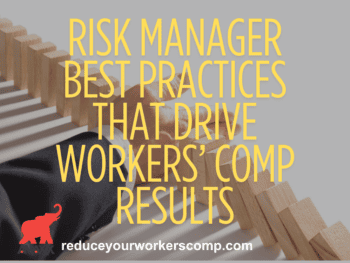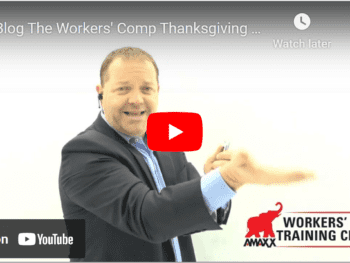
The origins of the term “silver bullet” is derived from Philip of Macedonia (the father of Alexander the Great), and the belief the element contains magical properties that can kill just about anything, including supernatural beings. It later gained fame in American folklore in the 1930s with the tales of the Lone Ranger – who used silver bullets to dispense justice in the Wild West.
Click Link to Access Free PDF Download
Like the Lone Ranger, members of the claim management team are charged with the responsibility of pursuing justice as they manage claims. This includes educating clients on best practices to improve program efficiency and reduce costs.
Remove Quick Claim Reporting Barriers
The failure to report a work injury remains a barrier in many programs. This is driven by the concern employers have when filing claims – they fear negative changes to their “experience rating modification.” The result will be increased premiums or losing coverage, and being forced into a state’s assigned risk plan pool.
When educating employers on the claims process, it is important to reiterate the following points and encourage prompt reporting of all work injuries:
- Statutory requirements an employer purchase insurance. Do not be afraid to use it. Insurance is a necessary cost of doing business;
- Highlight your program’s claim management toolbox. This includes post-injury response, return-to-work/transitional job placement, medical cost containment and medical care coordination. Prompt investigation and reporting of fraud, waste, and abuse are also important; and
- Education on reporting requirements. This should include information on how prompt reporting of work injuries can reduce penalties by a state industrial commission, which in turn impacts your workers’ compensation insurance premiums.
Impact of Late Claim Reporting
There are many significant problems caused by late reporting in the workers’ compensation process. Effective members of the claim management team can serve as a resource when it comes to this process. This starts with encouraging employers to report their known claims in a timely manner.
- Penalties: Industrial commissions generally monitor all required filings and the compliance department will issue penalties according to statute or rule. Most jurisdictions place an emphasis on the timely reporting of claims and prompt payment. This includes a graduated penalty system will impose sanctions on the insured and insurer when reporting is not done. The fines increase based upon the frequency of late reports, including the First Report of Injury, and late payment of workers’ compensation benefits to the employee; and
- Increased claim costs: Studies from the National Council on Compensation Insurance (NCCI) demonstrate delayed reporting increases costs to a program in other ways. According to this report, the median cost of a workers’ compensation claim increased dramatically if it was not reported within two weeks from the date of the injury – generally an increase of up to 51%. These claims were also found to be subject to more litigation, which included the use of an attorney. The report also determined quicker reporting allows for a better and more complete investigation.
FREE DOWNLOAD: “5 Critical Metrics To Measure Workers’ Comp Success”
Improved Claims Investigation Techniques
An effective investigation of any work injury must start with the employer. This includes preserving the accident scene, making sure the injury is documented correctly and evidence is not destroyed. From a claims management perspective, this can be frustrating as claim handlers are not included until after the fact. They can be proactive in promoting efficiency by helping their client’s in order to do a more complete job.
- Make sure all employees receive immediate and first-class medical care and treatment following an injury – even if it only includes the proper cleaning of a wound and dressing it to prevent infection;
- Preparation of work injury investigation kits. Items in these kits should include forms to document the injury, checklists to make sure all relevant information is is logged correctly and reminders to preserve evidence. Taking photographs is often a must; and
- Preservation of evidence. This can include defective equipment or documentation of floors, stairs or work This can matter when it comes to subrogation efforts down the road.
Conclusions
Members of the claims management team should use the “silver bullet” of quick claim reporting to drive down program costs and provide outstanding service. Part of the process must including educating all interested stakeholders in the workers’ compensation system to identify areas of improvement. By taking these steps, a program can be cost-effective and efficient.

Contact: mstack@reduceyourworkerscomp.com.
Workers’ Comp Roundup Blog: http://blog.reduceyourworkerscomp.com/
©2023 Amaxx LLC. All rights reserved under International Copyright Law.
Do not use this information without independent verification. All state laws vary. You should consult with your insurance broker, attorney, or qualified professional.
FREE DOWNLOAD: “5 Critical Metrics To Measure Workers’ Comp Success”

















